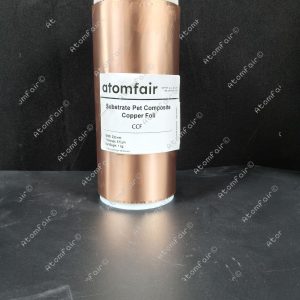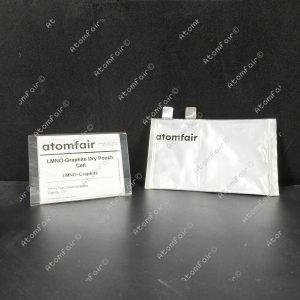Your cart is currently empty!

Atomfair Trimethylchloromethylammonium bromate C4H11BrN+
Description Trimethylchloromethylammonium Bromate (CAS No. 5422-70-8) is a high-purity quaternary ammonium compound with the molecular formula C4H11BrN+and the IUPAC name bromomethyl(trimethyl)azanium . This specialized chemical is ideal for researchers and scientists working in advanced material synthesis, particularly in the development of flexible piezoelectric materials . Its unique structure offers excellent reactivity and stability, making it a valuable reagent for organic and polymer chemistry applications. Each batch undergoes rigorous quality control, including moisture testing prior to shipment, ensuring consistent performance in sensitive experiments. Available in various quantities to suit lab-scale and pilot-scale needs.
Description
Description
Trimethylchloromethylammonium Bromate (CAS No. 5422-70-8) is a high-purity quaternary ammonium compound with the molecular formula C4H11BrN+ and the IUPAC name bromomethyl(trimethyl)azanium. This specialized chemical is ideal for researchers and scientists working in advanced material synthesis, particularly in the development of flexible piezoelectric materials. Its unique structure offers excellent reactivity and stability, making it a valuable reagent for organic and polymer chemistry applications. Each batch undergoes rigorous quality control, including moisture testing prior to shipment, ensuring consistent performance in sensitive experiments. Available in various quantities to suit lab-scale and pilot-scale needs.
- CAS No: 5422-70-8
- Molecular Formula: C4H11BrN+
- Molecular Weight: 153.04
- Exact Mass: 152.00749
- Monoisotopic Mass: 152.00749
- Charge: 1
- IUPAC Name: bromomethyl(trimethyl)azanium
- SMILES: C[N+](C)(C)CBr
- Synonyms: Trimethylchloromethylammonium bromate, SCHEMBL7750745
Application
Trimethylchloromethylammonium Bromate serves as a key precursor in the synthesis of flexible piezoelectric materials, enabling advancements in energy harvesting and sensor technologies. Its moisture-sensitive nature requires careful handling, making it suitable for humidity-related studies. Researchers also utilize this compound in the development of novel ionic liquids and functional polymers. Its reactivity with nucleophiles expands its utility in organic transformations.
If you are interested or have any questions, please contact us at support@atomfair.com
Related products
-
Atomfair 1 kg/roll Battery Grade PET Composite Copper Foil for Battery Anode Substrate/ Current Collector
$529.95 -
Atomfair 1 kg/roll Double Sides Conductive Carbon Coated Aluminum Foil for Battery Electrode Substrate/ Current Collector (200 mm wide 14+1+1 um thick)
$189.95 -
Atomfair 1AH LMNO || Graphite Dry Pouch Cell Lithium Ion Battery
$189.95 -
Atomfair 1AH LMR || Graphite Dry Pouch Cell Lithium Ion Battery
$329.95 -
Atomfair 1AH NCM811 || Graphite Dry Pouch Cell Lithium Ion Battery
$169.95




